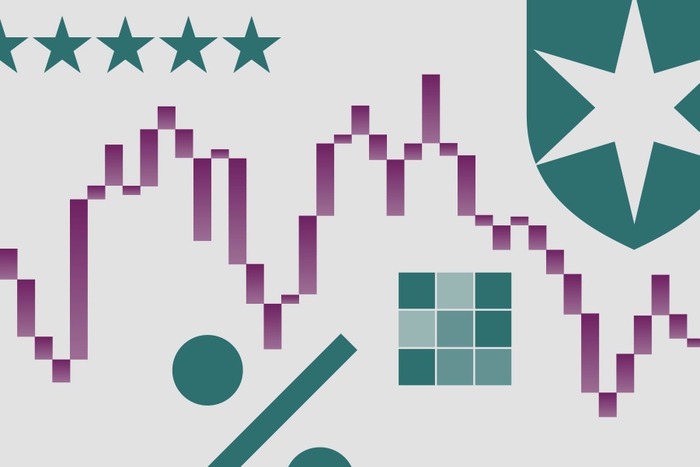Morningstar’s Star Ratings for ETFs and funds offer investors a convenient way to size up an ETF’s past performance and key characteristics to help them understand how suitable the investment may be in their portfolio.
Star Rating
The Star Rating is a proprietary Morningstar system that uses quantitative data to assign funds and ETFs with stars.
ETFs can get up to five stars based on how well they have performed in the past compared to similar funds and ETFs. The more stars assigned to an ETF, the better the ETF’s past performance. In addition to performance, the rating system also takes risk, volatility and sales charges into account. The ratings are completely objective, based entirely on a mathematical evaluation of past performance.
Within each Morningstar Category, the top 10% of funds receive 5 stars, 22.5% receive four stars, 35% receive three stars, 22.5% receive two stars, and 10% receive one star.
ETFs will only be given star ratings if they have been trading for three years or more. That time period allows Morningstar to collect enough data to rank an ETF’s performance, risk and volatility relative to its peers.
ETFs are rated for their performance over three key time periods: three years, five years and 10 years. These ratings are then combined to produce an overall rating. Since ETFs are a relatively young investment offering in Asia, the vast majority of ETFs will not have ratings for five and 10 year periods.
This Morningstar Star Rating for ETFs is also applied to all other funds, including unit trusts, OEICs, and investment trusts.
Investors should keep in mind that “despite the star rating’s merits, there are sure to be some duds among 5-star funds and some diamonds in the rough among lower-rated funds,” said Russel Kinnel, Director of Fund Research. This is due to the fact that star ratings are based purely on past performance, which cannot be used to predict future performance.
Investors who are shopping for ETFs should also be mindful of other investment considerations, including strategy, trading costs and expenses. Morningstar's ETF Analyst Reports, which are available to on our ETF Centres, do a nice job of summing up all of these variables.
Morningstar also uses other kinds of rating systems to help investors understand other asset classes. For example, some funds are assigned qualitative ratings by analysts to indicate expectations for future performance.
Esther Pak is an Assistant Site Editor of Morningstar.com.

















